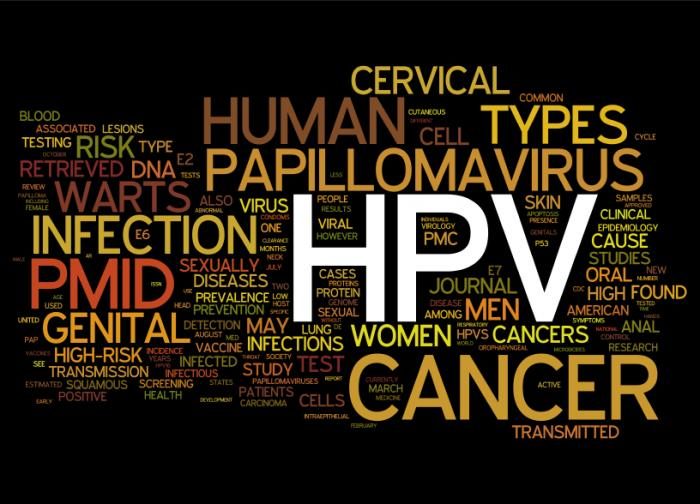
“Oh no!, Not again.” she thought. This was the third time in the past 6 months or so, that she was ‘spotting” or having some vaginal bleeding when it wasn’t time for her regular menstrual period. “I’m 45 years old, and have never had any problems with menstruation, what on earth is going on?” she asks her good friend. She had also noticed that sex with her husband was painful, with a little vaginal bleeding afterwards. Her friend smiles knowingly ”You’re getting old girlfriend! It might be the beginning of menopause.”
Unfortunately for the woman in our story, these are the most common symptoms of cervical cancer.
99% of all cervical cancer is caused by a virus called human-papillomavirus (HPV), which is transmitted from person to person through sexual contact. Half of all adults have been infected with HPV at some time. Most of the time, an HPV infection goes away by itself within 2 years, but sometimes high-risk HPV infections remain for several years and can cause genital warts or lead to cervical cancer.
Cervical cancer is one of the most common cancers in women worldwide and the number one cause of cancer deaths in African women. Cervical cancer occurs when abnormal cells grow out of control in the cervix. The cervix is the lower part of the uterus that opens into the vagina.
Cervical cancer is the easiest gynaecologic cancer to prevent, with regular screening tests and follow-up. It can often be successfully treated when it is found early. Two screening tests can help prevent cervical cancer or find it early:
- The Pap test (or Pap smear) looks for pre-cancers, changes in the cells of the cervix that might become cervical cancer if they are not treated appropriately.
- The HPV test looks for the virus (human papillomavirus) that can cause these cell changes.
A Pap test involves the doctor scraping a small sample of cells from the surface of the cervix to look for cell changes. The Pap test is recommended every 3 years for all women between the ages of 21 and 65 years old, and can be done in a doctor’s office or clinic.
Symptoms of cervical cancer may include:
- Bleeding: bleeding from the vagina that is not normal, such as bleeding between menstrual period, after sex or after menopause.
- Pain: this may occur in the lower belly or pelvis or during sex
- Discharge : vaginal discharge that isn’t normal
If any of these symptoms are present, a pap test is needed. If a Pap test shows abnormal cell changes, your doctor may do other tests to look for precancerous or cancer cells on your cervix.
The Pap test is the best way to find cervical cell changes that can lead to cervical cancer. Regular Pap tests almost always show these cell changes before they turn into cancer. It’s important to follow up with your doctor after any abnormal Pap test result so you can treat abnormal cell changes. This may help prevent cervical cancer.


